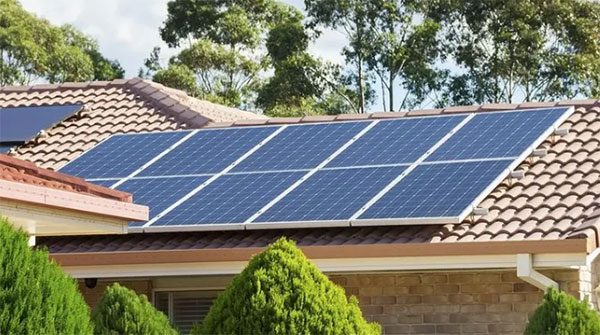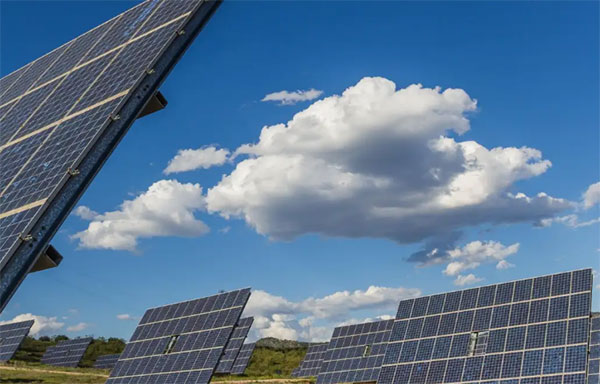Description
To determine a solar panel's polarity, use a multimeter to measure voltage across the terminals; positive readings indicate polarity.
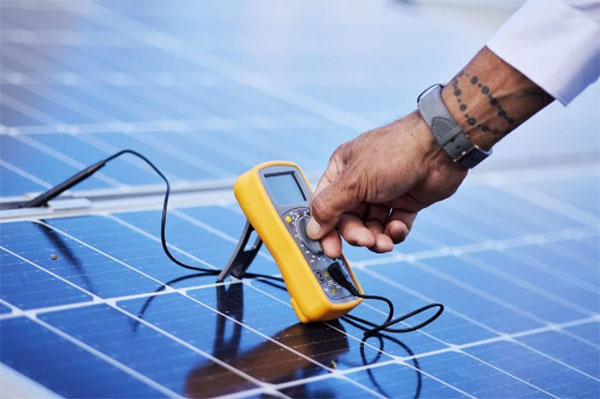
Understanding Solar Panel Polarity
Basics of Solar Panel Design
Solar panels convert sunlight into electricity using photovoltaic cells. Each cell contains layers of silicon, phosphorous, and boron, which create an electric field. This field is crucial in determining the polarity of the solar panel. The design aims to maximize the efficiency, typically ranging from 15% to 20% for most commercial panels.
Electrical Properties of Solar Panels
The electrical characteristics of solar panels are fundamental to their performance. They operate under specific voltage and current parameters, which are essential for matching with inverters and battery systems. A standard solar panel might produce around 18 volts at peak conditions. The quality of materials used directly impacts the durability and efficiency, with high-grade silicon cells offering longer lifespans, often exceeding 25 years.
Polarity in Solar Panel Systems
Polarity in solar panels refers to the electrical orientation of the terminals. Correct polarity ensures that electric current flows in the intended direction, crucial for safe and efficient system operation. In connecting multiple panels, maintaining consistent polarity is vital to prevent short circuits and energy losses.
Identifying Positive and Negative Terminals
Visual Inspection of Solar Panels
When visually inspecting solar panels, the positive and negative terminals are usually marked with a plus (+) and minus (-) sign, respectively. However, the color of the wires can also indicate polarity: red typically signifies positive, and black denotes negative. The backsheet of the panel often contains information about voltage and current specifications, which can be crucial for understanding the panel's electrical characteristics.
Tools for Identifying Polarity Several tools can assist in determining the polarity of solar panels:
- Multimeter: A primary tool for measuring voltage and current, helping identify which terminal is positive or negative.
- Solar Panel Tester: Specifically designed for solar panels, it can provide detailed readings of power output, efficiency, and polarity.
- Voltage Meter: Useful for checking the voltage output, indicating the active side of the panel.
Step-by-Step Guide to Determining Polarity
- Set Up Your Multimeter: Adjust it to the correct setting, typically the DC voltage mode.
- Connect the Multimeter Probes: Attach the red probe to one terminal and the black probe to the other.
- Read the Multimeter: A positive reading indicates that the red probe is on the positive terminal, while a negative reading means it's on the negative terminal.
Key Factors to Consider
- Efficiency: Solar panel efficiency, typically between 15%-20%, can influence the voltage and current output.
- Cost and Budget: The cost of tools like multimeters can vary, with basic models starting around $20.
- Quality of Materials: High-quality wiring and connectors ensure accurate polarity identification and long-term durability.
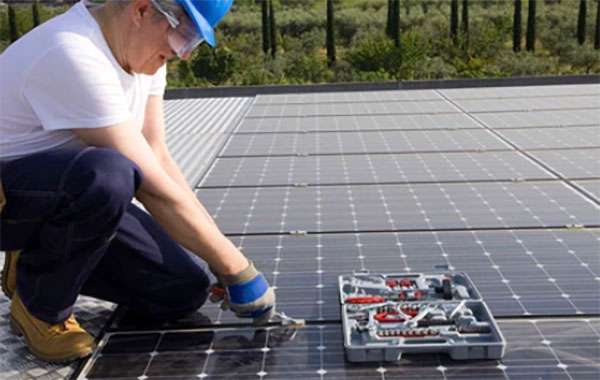
Testing Solar Panel Polarity
Using a Multimeter
To test the polarity of solar panels using a multimeter:
- Set the Multimeter: Adjust it to measure DC voltage.
- Connect the Probes: Attach the red probe to one terminal and the black probe to the other.
- Observe the Reading: A positive reading indicates correct connection; a negative reading suggests reversed polarity.
Interpretation of Multimeter Readings
Interpreting the readings correctly is crucial:
- Positive Values: Indicate the red probe is on the positive terminal.
- Negative Values: Suggest the probes are reversed.
- Zero or Fluctuating Readings: May imply a fault in the panel or incorrect setting on the multimeter.
Common Mistakes and Troubleshooting
- Incorrect Multimeter Setting: Ensure the multimeter is set to DC voltage.
- Poor Probe Contact: Verify the probes are securely attached to the terminals.
- Environmental Factors: Solar panels might show varied readings based on sunlight exposure.
Key Specifications and Factors
- Efficiency: Solar panel efficiency, typically around 15%-20%, impacts the power output.
- Cost of Tools: Basic multimeters start at approximately $20, while advanced models can cost more.
- Quality of Materials: The quality of the solar panel and multimeter influences the accuracy of readings.
- Solar Panel Lifespan: Quality solar panels can last over 25 years.
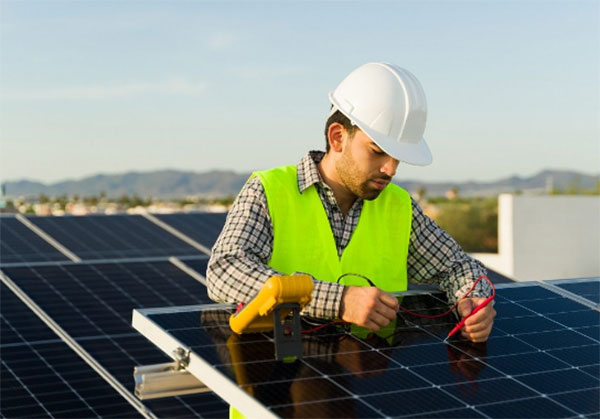
Implications of Incorrect Polarity
Impact on Solar Panel Efficiency
Incorrect polarity in solar panels can significantly affect their efficiency. Key points include:
- Reduced Power Output: The efficiency, which should range between 15%-20%, can drastically drop.
- Damage to Solar Cells: Prolonged incorrect polarity can lead to physical damage to the cells.
- Inverter Incompatibility: Inverters might fail to convert DC to AC efficiently, leading to energy losses.
Risks and Safety Concerns I
ncorrect polarity poses several risks:
- Electrical Hazards: Risk of short circuits, which can cause fires or equipment damage.
- System Instability: Fluctuating power supply can lead to unstable system performance.
- Reduced Lifespan: Solar panels might degrade faster, reducing their typical lifespan of over 25 years.
Correcting Polarity Issues To correct polarity issues:
- Recheck Connections: Ensure all connections follow the manufacturer's guidelines.
- Use Polarity Testers: Specialized tools can help identify and rectify polarity issues.
- Professional Assistance: In complex cases, seeking professional help is advised.
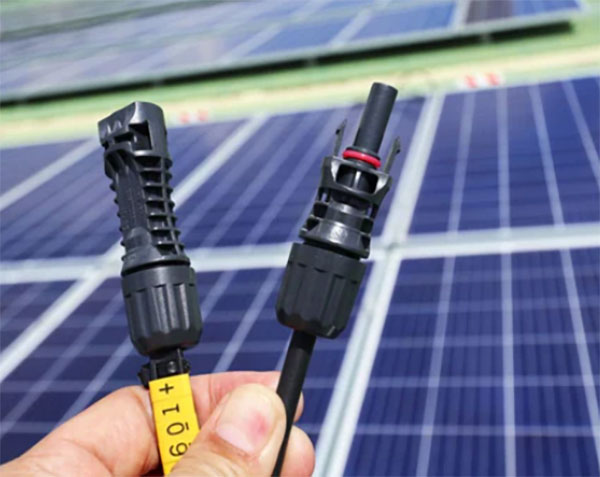
Connecting Solar Panels Correctly
Series vs. Parallel Connections
When connecting solar panels, the choice between series and parallel configurations is vital:
- Series Connections: Panels are connected end-to-end, increasing the voltage while keeping the current constant. Ideal for systems requiring higher voltage, series connections can suffer from the 'Christmas light effect' where the failure of one panel affects the entire string.
- Parallel Connections: Here, the current is increased while voltage remains constant. This setup is more resilient to shading or panel failure, as each panel operates independently.
Ensuring Correct Polarity in Arrays
Maintaining correct polarity in solar panel arrays is essential:
- Consistent Orientation: All panels in an array must have the same polarity orientation.
- Use of Combiner Boxes: These can help manage connections, especially in complex arrays.
- Regular Polarity Checks: Using a multimeter or polarity tester to ensure all connections are correctly oriented.
Professional Tips for Installation
For optimal installation:
- Understand Load Requirements: Match the solar array's output (voltage and current) with the system's load requirements.
- Quality Components: Use high-quality connectors and cables to minimize losses and ensure safety.
- Regular Maintenance: Regular checks for wear, tear, and corrosion can prevent polarity issues.
- Safety First: Always prioritize safety, adhering to electrical codes and using appropriate protective gear.





